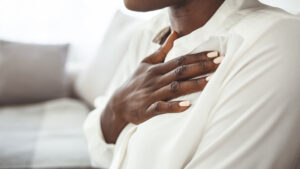
Taking a fall when you’re younger may result in some stiffness or short-lived pain if you’re unlucky. But when you get older, those falls can pose a serious threat.
Advertisement
Falls can be devastating for older Americans. The Centers for Disease Control and Prevention (CDC) says about 36 million older adults report falls each year. About 3 million end up in the emergency room, and more than 30 thousand die as a result.
Even if you have a fall and escape without a severe injury, it can have a significant effect on your life. The fear of falling again, for example, can be a major hamper.
A new report suggests that heart problems are very common in those with heart disease, and heart problems may add significant risk for a fall.
A new report published in the American Heart Association (AHA) journal Circulation: Cardiovascular Quality and Outcomes says even basic information is lacking on how or why people with heart disease fall and how severely they are injured.
How can heart disease influence fall risk?
In a number of ways. Heart problems, it seems, can influence fall risk both directly and indirectly. In some cases, a fall can even contribute to heart disease.
For example, a person who has fallen may become fearful of falling again, thereby shunning away from activity and keeping themselves sedentary.
Advertisement
A heart rhythm problem, for example, may cause blood pressure to dip and become lightheaded or unconscious, which can result in lost balance and a fall. People with heart disease and diabetes may have neuropathy, which leads to numbness in the lower extremities. A person that has suffered a stroke may have weakness on one side of their body.
Many heart conditions are treated with a classification of medicine called diuretics, which lead to frequent urination. When the urge to go to the bathroom hits, people can be in a hurry and fall. These meds can also lead to drops in blood pressure that may cause light-headedness and boost the risk of a fall.
If you’ve got heart issues, or even if you don’t, it’s worthwhile to prepare yourself for a potential fall. Working on exercises that improve balance and agility and making your home more fall-proof are two ways you can reduce the risk.
